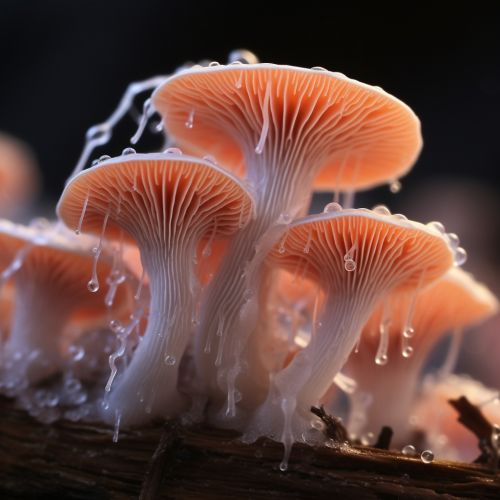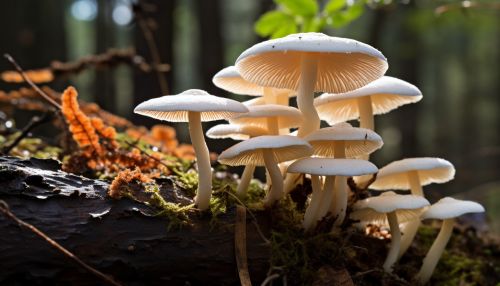Taphrinomycotina
Overview
Taphrinomycotina is a subphylum of the fungi kingdom, which includes several unique and diverse classes such as Taphrinomycetes, Protomycetes, and Neolectomycetes. This subphylum is characterized by its members' ability to cause plant diseases, their unique life cycle, and their morphological features.


Taxonomy
The classification of Taphrinomycotina has been a subject of debate among mycologists. It is currently classified under the phylum Ascomycota, one of the largest phyla in the fungi kingdom. The subphylum Taphrinomycotina is further divided into three classes: Taphrinomycetes, Protomycetes, and Neolectomycetes. Each class is distinguished by its unique morphological characteristics and life cycle.
Morphology
Taphrinomycotina fungi exhibit a wide range of morphological diversity. They are typically characterized by their yeast-like growth form, but they can also take on a filamentous form. The cells of Taphrinomycotina fungi are usually unicellular and reproduce by budding, a form of asexual reproduction. However, under certain conditions, they can also produce sexual spores known as ascospores.
Life Cycle
The life cycle of Taphrinomycotina fungi is unique and complex. It typically involves a yeast phase and a filamentous phase. The yeast phase is characterized by the production of yeast cells through budding, while the filamentous phase involves the formation of hyphae and the production of ascospores. The transition between these two phases is triggered by environmental conditions.
Ecological Role
Taphrinomycotina fungi play a significant role in the ecosystem. They are primarily saprophytic, meaning they feed on dead organic matter, contributing to the decomposition process and nutrient cycling. Some species are also pathogenic, causing diseases in plants. These pathogenic species can have significant impacts on agricultural productivity.
Pathogenic Species
Several species of Taphrinomycotina are known to be pathogenic, causing diseases in a variety of plants. For example, Taphrina deformans causes peach leaf curl, a common disease in peach trees. Other pathogenic species include Taphrina populina, which causes leaf spot on poplar trees, and Taphrina pruni, which causes plum pocket disease in plum trees.
Research and Studies
Taphrinomycotina fungi are a subject of ongoing research due to their unique life cycle and their role as plant pathogens. Studies have focused on understanding their life cycle, their pathogenicity mechanisms, and their potential use in biocontrol.
